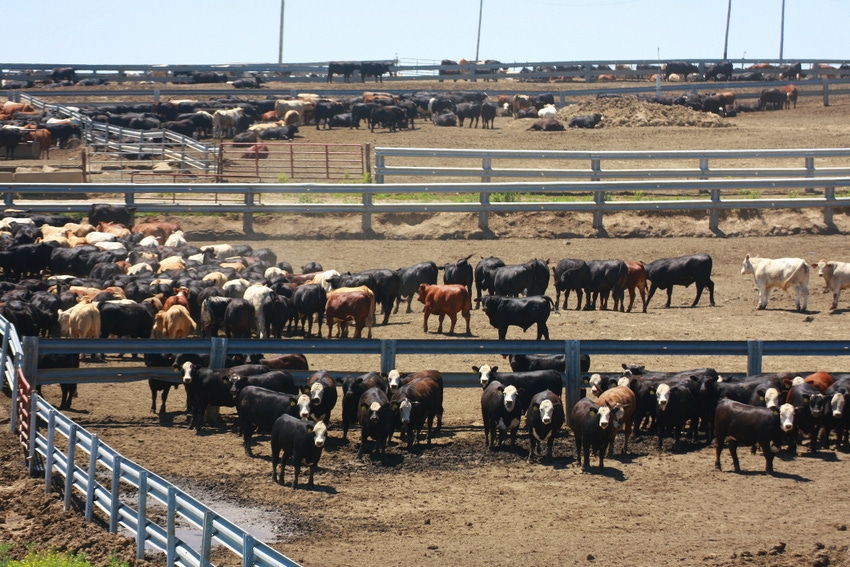Ag economist says prospects for cattle feeders to operate profitably for rest of fall and early winter look good.
November 8, 2017

Cattle feeding profitability has been on a roller-coaster ride for the last couple of years, Purdue University agricultural economist Jim Mintert recently noted.
Mintert said Iowa State University data show that cattle feeders suffered horrific losses in both 2015 and 2016. Those losses continued throughout 2016, he said, and still averaged $117 per head for a typical yearling feeding program and a loss of $216 per head for a typical calf feeding program during the October-to-December 2016 quarter.
However, Mintert said that situation changed dramatically in 2017.
“Relying again on the Iowa State estimates, during the first nine months of 2017, feeding returns for yearlings averaged (a positive) $198 per head and $191 for calves,” he noted, adding that the turnaround was even more dramatic when examining monthly returns. Monthly yearling returns reached a $415 profit, and calf feeding returns climbed to a profit of more than $500 per head during May 2017.
“The return for feeding calves during May was a new record in the Iowa State data going back to 1981, and the yearling feeding return was the highest value since 2003,” he noted.
According to Mintert, the increase in feeding returns during 2003 occurred primarily as a result of a surge in fed cattle prices during the brief window of time when Canada was locked out of the export markets because of bovine spongiform encephalopathy (BSE) in Canada but before the U.S. discovered its first BSE case.
The increase in feeding returns in spring 2017, on the other hand, was the result of cattle feeders' breakevens declining from $117/cwt. at the beginning of the year to the upper $90s/cwt. for calf programs and the low $100s/cwt. for yearling programs by spring, combined with a strengthening fed cattle market, he explained.
“Sale prices for fed cattle climbed roughly $20/cwt. from the beginning of 2017 to mid-spring, pushing the revenue per head up by approximately $250 per head,” he said.
Although cattle feeding was profitable during most of 2017, Mintert said Corn Belt feeding returns, according to Iowa State calculations, did turn negative in September 2017. Yearling returns in September were a loss of $41 per head, and calf feeding returns were a loss of $26 per head.
“The shift from profitability to negative returns begs the question, What lies ahead for cattle feeders?” Mintert explained, adding that answering that question requires a better understanding of what was behind the large losses in 2015 and 2016.
He said the 2015 and 2016 losses were mostly attributable to two factors: (1) cattle feeders bid up feeder cattle prices to record levels, which, in turn, pushed the fed cattle prices needed to breakeven dramatically higher, and (2) contrary to expectations, prices for fed cattle dropped sharply.
“The combination of high costs and weak fed cattle prices proved devastating, leading to record losses for cattle feeders,” Mintert said.
What has happened so far in 2017, Mintert said, is that total costs per head have climbed since the peak in profitability last spring, but the increase to date has been modest.
“Total costs per head for a yearling program rose from $1,388 for cattle marketed during May to $1,420 per head for cattle marketed in September. The big shift occurred in the value of fed cattle marketed,” he said.
Mintert explained that the total sales value per head dropped from a peak of $1,815 to just $1,388 in September as the fed cattle sales price declined from a monthly average near $140 last May to less than $107 in September.
“To date, it appears that cattle feeders have not repeated the mistakes of 2015 and 2016, with both calf and yearling values trading at more manageable price levels, helping to hold down feeders' breakeven prices," he said. "The real key to profitability will be the direction that fed cattle prices follow the rest of the fall and into early winter.”
Mintert noted that cash prices for slaughter cattle bottomed in early September, trading near $105/cwt. in the southern Plains, but they have since strengthened and climbed above $124/cwt. last week after trading near $118/cwt. a week earlier.
“The turnaround in fed cattle prices has pushed cattle feeding returns back into positive territory," Mintert said. "Given the moderation in feeder cattle prices this year, unlike 2015 and 2016, prospects for cattle feeders to operate profitably the rest of the fall and early winter look good.”
You May Also Like

.png?width=300&auto=webp&quality=80&disable=upscale)

